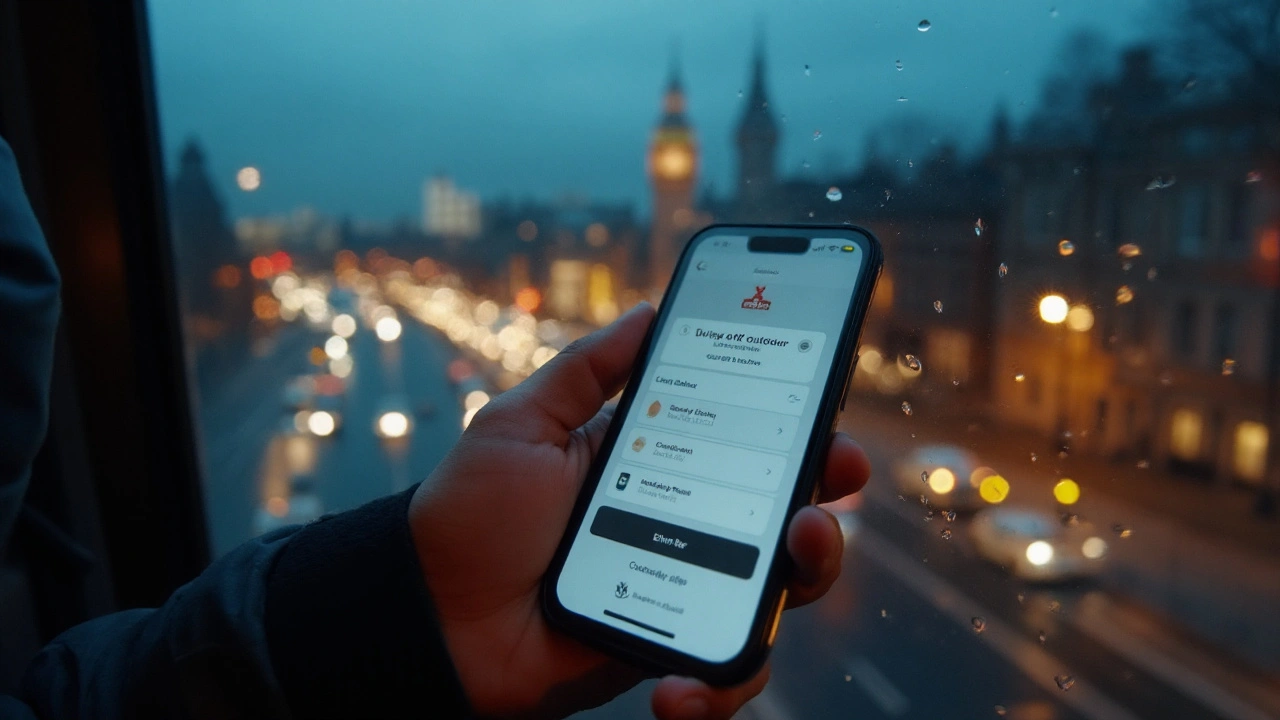Breaking Barriers with Internet Marketing: A Practical Guide to Scale

Most growth stalls for the same three reasons: people can’t find you, they don’t trust you yet, or it’s too hard to take the next step. This guide shows how to break those barriers with internet marketing-without big budgets, vague theory, or shiny-object traps.
What to expect: a simple framework, steps you can ship this week, data to set targets, and checklists to avoid the usual traps. I’m Harrison, a Canberra-based marketer who’s spent the last decade helping small teams punch above their weight. No fluff-just what works.
TL;DR
- Barriers you must crush: Discovery (get seen), Trust (earn belief), Friction (make action easy).
- Start narrow: one audience, one offer, one channel, one metric, 90-day sprint.
- Use a simple funnel: Hook → Proof → Offer → Action. Test 5-10 hooks fast.
- Measure two things first: cost to acquire (CAC) and conversion rate. Improve what leaks.
- Scale only what clears your guardrails: CAC ≤ 1/3 LTV, payback under 6-12 months.
The playbook: crush discovery, trust, and friction in that order
When someone clicks an article called “Breaking Barriers with Internet Marketing,” they’re usually trying to do five jobs:
- Find a clear plan that doesn’t need a giant team.
- Pick channels that actually match their buyer.
- Create messages that cut through noise and build trust fast.
- Measure wins without getting lost in dashboards.
- Scale what works without wasting money.
Here’s the simple system I use with clients, from solo founders to B2B teams.
1) Define one battleground (not five)
- One audience: Name the person who buys. Not “SMBs.” Say “tradies in Canberra who need fast website fixes.”
- One pain: What wakes them at 2 a.m.? Slow leads, missed bookings, stockouts, compliance risk?
- One offer: A clear promise with a time box. “Free teardown in 24 hours.” “First consult, no obligation.”
- One metric: If you had only one number, what would prove progress? For most: booked calls, trials, or paid sign-ups.
Why this works: focus multiplies your limited budget. It also makes testing faster because you cut variables.
2) Pick channels by intent and speed
- High intent (ready to buy): Google Search Ads, local SEO, review sites. Good for quick wins, more expensive per click.
- Mid intent (solution-aware): YouTube, LinkedIn, TikTok, comparison posts, retargeting. Cheaper traffic; needs stronger proof.
- Low intent (problem-aware): Educational SEO, social reach, newsletters, partnerships. Slower but builds durable demand.
Rule of thumb: If you need customers this month, allocate 70% to high intent and 30% to mid/low. If you’re stable and want long-term scale, flip it to a 60/40 brand vs performance mix (Binet & Field, IPA). For B2B, a near 50/50 split is common (B2B Institute).
3) Build a tiny but mighty funnel
Everything you publish should move people through these four moments:
- Hook: First 3 seconds answer “Why should I care?” Use a specific outcome: “Cut your ad CPA by 28% in 30 days.”
- Proof: One screenshot, stat, or mini-case. “12 leads in 10 days at $24 each.” “4.9★ average from 213 reviews.”
- Offer: Make next step safe. “Free audit,” “Sample,” “No-strings consult.”
- Action: One button. No leaks. No extra fields. 3-click max from ad to booked slot.
Creative cadence that works: Test 5 hooks per channel, each with one proof angle (results, social proof, authority badge, process peek, guarantee). Kill underperformers in 5-7 days. Ship a new variant weekly.
4) Fix friction you can’t see yet
- Speed: Pages should load under 2 seconds on 4G. Slow pages can halve conversion rates. Use compressed images, lazy load, and a lightweight theme.
- Mobile: 60-80% of traffic is mobile in many niches. Make buttons thumb-sized, forms short, copy tight.
- Accessibility: Use alt text, proper contrast, readable fonts, clear labels. The upside isn’t just legal safety-it lifts conversions.
- Trust cues: Show prices or ranges, delivery times, refund terms, and a real face. People buy from people.
- Compliance (AU): Follow the Spam Act 2003 (consent + easy unsubscribe), be transparent with cookies, and respect privacy expectations. You’ll build more trust and keep your lists clean.
5) Measure what matters first
- CAC: Total ad + content + tool spend divided by new customers. Guardrail: CAC ≤ 1/3 of your average LTV.
- Conversion rate: From click to key action. Fix leaks before adding budget.
- Payback: Months to recover CAC from gross margin. Under 6-12 months is a solid target for many SMBs; SaaS can stretch to 12-18 if retention is strong.
- MER/ROAS: Watch blended efficiency (total revenue ÷ total marketing spend). Channel ROAS lies if it steals credit; blended tells the truth.
On attribution: With third‑party cookies fading, expect gaps. Use a simple model: platform numbers for daily tweaks, blended MER for budget calls, and lift tests when spend is big enough. Keep a “How did you hear about us?” field-it often beats fancy dashboards.
6) Run 90‑day sprints
- Weeks 1-2: Prep. Research terms, draft hooks, build 1-2 landing pages, set up tracking (conversions, calls, form events).
- Weeks 3-4: Launch. Start with low-risk bids, exact/phrase match on search, or tight audiences on social.
- Weeks 5-8: Iterate. Kill losers fast. Shift budget to winners. Fix page leaks.
- Weeks 9-12: Scale. Raise budgets 15-25% at a time if metrics hold. Add one new channel or creative angle.
Creative ratio: 70/20/10. Seventy percent proven formats, 20% adjacent ideas, 10% wild cards. You get stability and learning at the same time.

Examples, benchmarks, and checklists that save you time
Some practical scenarios to make this real.
Local service example (Canberra PT studio)
- Discovery: Google Search Ads for “personal trainer Canberra,” local SEO for “near me,” and Google Business Profile posts weekly.
- Trust: Short client video testimonials, star ratings on the home page, and a clear pricing range: “From $69/week.”
- Friction: One-tap booking with Calendly, Apple/Google Pay for deposits, SMS reminders.
- Offer: “7‑day kickstart-with a real plan, not a bootcamp.”
- Result target: Aim for 6-10% landing page conversion and a CAC under $120. If your average client stays 4 months at $69/week (~$1,100 revenue), you have room.
B2B SaaS example (workflow tool)
- Discovery: LinkedIn for job titles, Google Search for pain keywords, partner webinars with a complementary tool.
- Trust: Proof by numbers (“23% faster onboarding”), logos, and a 3-minute demo with chapter markers.
- Friction: Trial without credit card, 2-step onboarding, and concierge setup for qualified accounts.
- Offer: “14‑day guided trial + your workflow mapped in 48 hours.”
- Result target: Free-to-paid conversion at 8-15%, CAC payback under 12 months. LTV:CAC at least 3:1.
E‑commerce example (niche apparel)
- Discovery: Meta Advantage+ Shopping, Google Performance Max, TikTok spark ads with UGC.
- Trust: UGC try‑on videos, 30‑day returns, sizing help right on product pages.
- Friction: One‑page checkout, Shop Pay, free exchanges, delivery estimates by postcode.
- Offer: “Try 2 sizes, return 1 free. First order ships today.”
- Result target: Aim for 2-4% site conversion, blended MER above 2.5. If new‑customer AOV is $95, protect first‑order CAC under ~$35-$40.
Benchmarks and ranges (sanity checks, not commandments)
These numbers help you sense-check performance. Your niche and creative will swing results. Use them to set starting targets, then tune.
| Channel / Metric | Typical CTR | Typical CPC/CPM | Landing Page Conv. | Notes |
|---|---|---|---|---|
| Google Search Ads | 5-12% | $1-$6 CPC | 8-20% | Higher for brand terms; exact/phrase match improves quality. |
| Meta (Facebook/Instagram) | 0.8-2.5% | $6-$18 CPM | 1.5-4.5% | Creative drives 80% of variance. Refresh weekly at small budgets. |
| TikTok Ads | 0.6-1.8% | $4-$12 CPM | 1-3% | Native‑feeling UGC wins. Keep it vertical and fast. |
| LinkedIn Ads (B2B) | 0.4-1.2% | $8-$18 CPC | 1-3% | Use tight job titles + lead magnets; higher quality than volume. |
| Email (click rate) | 1-3% | N/A | 2-5% (to purchase/booking) | Open rates are noisy; clicks predict revenue better. |
| Organic SEO (post click) | N/A | N/A | 1-4% (lead) / 0.5-2% (purchase) | Topic match + intent match matter more than sheer traffic. |
Sources: Ranges based on aggregated public benchmarks (WordStream and platform docs, 2023-2024), the IAB Australia Online Advertising Expenditure Report (context on spend and trends), and hands-on campaign data across SMB and B2B accounts. Use them as starting ranges, not promises.
Copy frameworks you can steal today
- Problem → Proof → Payoff → Prompt: “Manual rostering burns 6 hours weekly. Here’s how River Café cut it to 20 mins. Your turn-book a 10‑minute setup.”
- Before/After/Bridge: “Before: 9 tabs and missed messages. After: one inbox. Bridge: Get the migration checklist.”
- Three Objections: “Is it safe? ISO27001. Will it work for us? 19 case studies. Hard to switch? Done in 48 hours.”
Offer ideas that lower risk
- Free audit with a Loom video (5-7 minutes) and a plain checklist.
- Test drive: “Pay $1 for 7 days” or “Book a trial kit.”
- Performance slice: “If we don’t cut your CPA by 15% in 30 days, don’t pay the fee.”
- Guarantee tiers: basic refund, bonus service, or extended warranty.
Launch checklist (keep this handy)
- One audience, one offer, one page, one metric picked.
- Five hooks ready, each with a different proof angle.
- Landing page loads under 2 seconds; mobile layout checked on a real phone.
- Tracking: conversions, calls, and form submits tested.
- Retargeting built for 7-30 days with social proof creative.
- Budget plan: daily cap, kill rules, and success thresholds set.
- Compliance: consent language, unsubscribe, and privacy copy reviewed.
Simple budget map (starter)
- $2k/month: $1,200 to high‑intent (Search), $600 to social testing, $200 to tools/creatives.
- $5k/month: $2,500 high‑intent, $1,500 social, $500 content/SEO, $500 creatives/tools.
- $15k/month: $6k high‑intent, $5k social (prospecting + retargeting), $2k SEO/content, $2k creative production.
Guardrails: Raise spend by 15-25% only if CAC and conversion rate hold for 7-10 days. Don’t scale on a lucky three‑day streak.
SEO without the fairy dust
- Target problem+intent: “how to choose roofing contractor Canberra” beats “roofing tips.”
- Answer in 50 words up top; add diagrams or step lists. People skim.
- Include a mini-CTA every scroll. “Get a quote in 60 seconds.”
- Keep pages fast, clean, and scannable. Fancy doesn’t rank; useful does.
Privacy and data you can trust
- Build first‑party lists: email, SMS (with clear consent), and community groups.
- Use UTM discipline. Name sources and campaigns consistently so your reports don’t lie.
- Expect less perfect tracking as cookies fade. Use surveys, coupon codes, and controlled “off/on” tests to validate lift.

FAQs, decisions, and next steps
Mini‑FAQ
- How fast will this work? Search ads and retargeting can move in 7-14 days. SEO and partnerships often take 60-120 days. Run both: one feeds today, one feeds next quarter.
- What if my market is tiny? Great. Niche messaging wins. Own one problem for one group. You’ll pay less in ad auctions and close at higher rates.
- Do I need fancy tools? No. Use a landing page builder, an ad account, and basic analytics. Upgrade when manual work hurts.
- What’s a good conversion rate? For lead gen, 8-15% from click to form is healthy. For e‑com, 2-4% sitewide. Your offer and traffic quality matter more than the exact number.
- Should I chase every new platform? No. Add one new channel at a time. Prove a baseline, then expand.
Decision help: which channel first?
- People already search for your offer? Start with Google Search + a tight landing page.
- New category or visual product? Start with TikTok/Meta video and UGC.
- Enterprise buyers? LinkedIn + partner webinars + targeted content is safer.
- Local service? Google Business Profile + Search Ads + reviews. Simple wins.
Troubleshooting by symptom
- Great CTR, poor conversions: Your page or offer leaks. Tighten the headline to mirror the ad, cut form fields, add live chat or a calendar embed.
- Low CTR: Hooks miss the pain. Try numbers, time boxes, or a strong contrast (“Stop paying for clicks that never call”).
- CAC too high: Go up‑funnel with content that pre‑qualifies, test cheaper audiences, or shift budget to high‑intent terms. Improve AOV with bundles.
- Results bounce around: Your sample size is tiny. Let tests run to at least 200-300 clicks before calling winners.
- Attribution is messy: Use a weekly blended dashboard (spend, revenue, CAC, MER) and a simple “How did you hear about us?” field. Don’t chase pixel perfection.
Next steps: your 7‑day plan
- Day 1: Write your single-sentence offer: “For [who] struggling with [pain], we deliver [outcome] in [timeframe] with [proof].”
- Day 2: Draft 5 hooks and pick one channel that fits your buyer’s intent.
- Day 3: Build one fast page: hook, proof, offer, action. Test it on your phone.
- Day 4: Set up tracking and a simple sheet for CAC, conversion rate, and spend.
- Day 5: Launch with a modest budget. Add 1-2 retargeting creatives.
- Day 6: Kill obvious losers. Swap in one new hook.
- Day 7: Review: What message got the most intent? Double down next week.
A note on trust
People don’t buy because you explained everything. They buy because they believe you can deliver the one outcome they care about. Show one proof, one path, one next step. That’s how you break barriers-one clear win at a time.
Credibility notes: The 60/40 brand‑performance split comes from Binet & Field’s long‑term effectiveness research (IPA). Email compliance guidance aligns with the Australian Spam Act 2003 (ACMA). The benchmark ranges reflect platform documentation and aggregated public studies (e.g., WordStream, IAB Australia) plus what I’ve seen running campaigns for local businesses and B2B teams.



